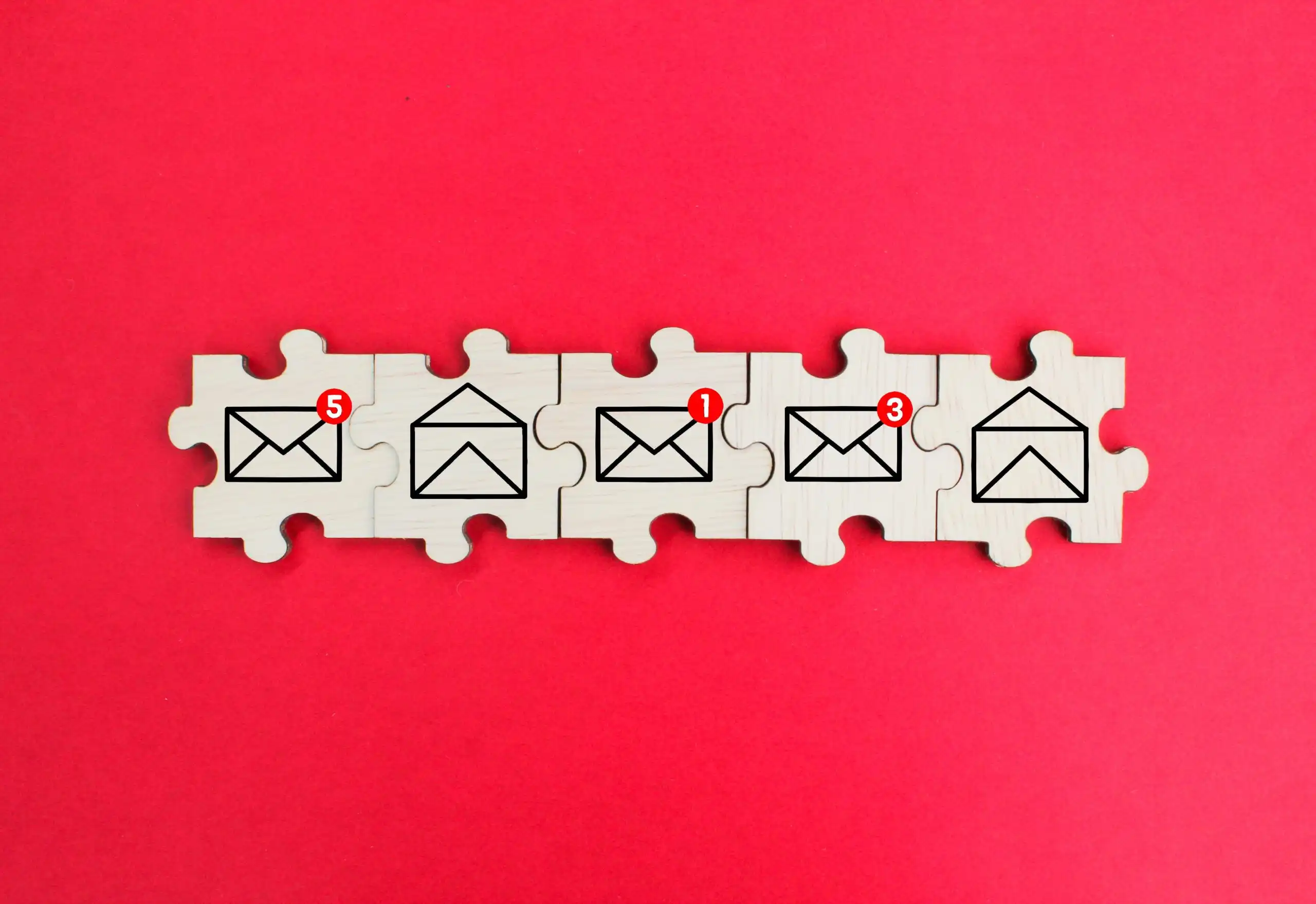Building an email list is a crucial aspect of affiliate marketing. It allows marketers to stay connected with their audience, promote products and services, and ultimately drive sales. In this article, we will provide an essential guide to building an email list specifically tailored for affiliate marketing.
The guide will cover the key steps involved in creating an email list, including choosing an email marketing service, creating a sign-up form, offering incentives for signing up, regularly sending emails, segmenting your list, using A/B testing, and engaging with your subscribers. By following these steps, affiliate marketers can create an effective email marketing strategy that can help them grow their business and increase their revenue.
Key Takeaways
- Building an email list is crucial to the success of affiliate marketing.
- The key steps involved in creating an email list include choosing an email marketing service, creating a sign-up form, offering incentives, regularly sending emails, segmenting your list, using A/B testing, and engaging with subscribers.
- By following these steps, affiliate marketers can create an effective email marketing strategy that can help them grow their business and increase their revenue.
Step 1: Choose an Email Marketing Service
To start building an email list, selecting an email marketing service is the first step. There are various options available, such as Mailchimp, Constant Contact, and AWeber. Each service offers distinct features and pricing plans, so it’s crucial to choose one that fits your requirements and budget.
Step 2: Create a Sign-Up Form
After selecting an email marketing service, the next step is to create an easy-to-use sign-up form that clearly explains the benefits of joining your email list. This form can be placed on your website, blog, or social media profiles, or used as a pop-up on your website. Ensure that the form is user-friendly and visually appealing to encourage people to sign up. It’s important to make it clear to potential subscribers what they’ll gain from joining your list.
Step 3: Provide an Incentive for Email Sign-Ups
To increase email sign-ups, offering an incentive can be an effective strategy. This could include a free download, discount code, or exclusive content. Providing something valuable in exchange for an email address is more likely to encourage people to sign up. Consider offering incentives that align with your brand and will appeal to your target audience.
Step 4: Regularly Send Emails
To maintain a strong connection with your audience, it’s crucial to send regular emails to your subscribers. These emails could include weekly newsletters, updates on new products or services, or special promotions. Consistently sending emails will help keep your brand top of mind and ensure that your subscribers remain engaged with your content. By regularly communicating with your audience, you’ll be able to build a loyal following and increase your chances of converting leads into customers.
Step 5: Segment Your List
As an email list grows, it becomes crucial to segment it based on subscribers’ interests and needs. Segmentation allows for more targeted and relevant emails to be sent to subscribers. For instance, separate lists can be created for people interested in different products or services. This ensures that subscribers receive emails that are tailored to their preferences, leading to higher engagement and conversion rates.
Step 6: Use A/B Testing
A/B testing is a valuable tool for email marketers. It enables them to experiment with different versions of their emails and determine which version yields better results. By testing different elements such as subject lines and calls to action, email marketers can optimize their emails to improve their performance. A/B testing is a reliable way to measure the effectiveness of email campaigns and make data-driven decisions to enhance their impact.
Step 7: Engage with Your Subscribers
Engaging with your subscribers is a crucial step in building a strong relationship with them. By responding to comments or questions, asking for feedback, and providing valuable content, you can turn your subscribers into loyal customers. Here are some tips for engaging with your subscribers:
- Respond promptly: Make sure to respond to comments or questions in a timely manner. This shows your subscribers that you value their input and are committed to building a relationship with them.
- Ask for feedback: Encourage your subscribers to provide feedback on your products or services. This not only helps you improve your offerings, but also shows your subscribers that you value their opinions.
- Provide valuable content: Make sure to send targeted and relevant emails that provide value to your subscribers. This helps build trust and keeps your subscribers engaged.
By following these tips, you can build a strong relationship with your subscribers and turn them into loyal customers. Remember to always provide value and engage with your subscribers to keep them interested in your products and services.
Frequently Asked Questions
What are the top autoresponders for affiliate marketing?
Autoresponders are essential for affiliate marketing. They help manage email lists, automate email sequences, and track email campaign performance. The top autoresponders for affiliate marketing include Aweber, GetResponse, and ConvertKit. Each of these platforms offers a range of features, including customizable opt-in forms, landing pages, and email templates.
Which websites are best for promoting affiliate links?
Affiliate marketers can promote their links on a variety of websites, including social media platforms, blogs, and forums. However, the best websites for promoting affiliate links are those that are relevant to the product or service being marketed. For example, a fitness blogger may promote fitness products on their blog, while a tech enthusiast may promote software products on their YouTube channel.
What is the best newsletter service to use for affiliate marketing?
Newsletters are a great way to keep subscribers engaged and informed about new products and promotions. The best newsletter service to use for affiliate marketing is one that allows for easy customization, automation, and tracking. Some popular options include Mailchimp, Constant Contact, and Campaign Monitor.
How can I build an email list from scratch?
Building an email list from scratch requires a strategic approach. Start by creating a lead magnet, such as an eBook or free course, to entice visitors to sign up for your email list. Next, optimize your website for conversions by placing opt-in forms in prominent locations. Finally, promote your lead magnet and website on social media and other relevant platforms.
What are some effective affiliate marketing email sequences?
Effective email sequences for affiliate marketing include a welcome sequence, promotional sequence, and educational sequence. The welcome sequence introduces subscribers to the brand and sets expectations for future emails. The promotional sequence highlights new products and promotions. The educational sequence provides value to subscribers by offering tips, advice, and resources related to the product or service being marketed.
What is affiliate marketing?
Affiliate marketing is a performance-based marketing strategy where an affiliate promotes another company’s products or services and earns a commission for each sale or lead generated through their efforts.
How can an email list benefit affiliate marketing?
Building an email list is crucial for affiliate marketing as it provides a direct channel to communicate with potential customers. Through email marketing campaigns, affiliates can promote affiliate products, share valuable content, and nurture relationships with their subscribers.
How do I build an email list for affiliate marketing?
To build an email list for affiliate marketing, follow these steps:
1. Choose an email service provider
2. Create a signup form
3. Offer an incentive
4. Drive traffic to your signup form
5. Deliver valuable email content
6. Add affiliate links to your emails
7. Promote your affiliate offers
8. Nurture and engage with your subscribers
What are the best email marketing strategies for affiliate marketing?
Here are some effective email marketing strategies for affiliate marketing:
1. Segment your email list
2. Personalize your emails
3. Provide exclusive marketing content
4. Use compelling subject lines
5. Create a sense of urgency
6. Test different email formats and designs
7. Track and analyze your email campaigns
8. Maintain a consistent email flow
9. Utilize automation and autoresponders
10. Continuously optimize your email marketing efforts
What tools or software can I use for affiliate email marketing?
There are several email marketing software options available for affiliate marketing. Some popular ones include:
1. Mailchimp
2. AWeber
3. GetResponse
4. ConvertKit
5. Constant Contact
6. Campaign Monitor
7. ActiveCampaign
8. Infusionsoft
9. SendinBlue
10. Drip
How can I grow my email list for affiliate marketing?
To grow your email list for affiliate marketing, try these strategies:
1. Create compelling lead magnets
2. Optimize your signup forms
3. Offer exclusive discounts or promotions
4. Run contests or giveaways
5. Collaborate with influencers or other affiliates
6. Utilize social media and paid advertising
7. Capture email addresses at events or webinars
8. Provide valuable content that encourages sharing
9. Optimize your website for conversions
10. Continuously analyze and improve your list building efforts
Can I use affiliate marketing in my email campaigns?
Yes, you can absolutely use affiliate marketing in your email campaigns. Just make sure to disclose your affiliate relationship and comply with the applicable laws or regulations regarding affiliate marketing.
How can email marketing boost my affiliate income?
Email marketing can boost your affiliate income by nurturing relationships with your subscribers, promoting affiliate offers through personalized and targeted emails, and driving traffic to your affiliate links. By building trust and providing value to your audience, you increase the likelihood of them clicking on your affiliate links and making purchases.
What is the role of email content in affiliate marketing?
Email content plays a crucial role in affiliate marketing as it allows you to deliver valuable information, build relationships, and promote affiliate products. Well-crafted email content that aligns with your audience’s interests and provides solutions or benefits can significantly impact your affiliate marketing efforts.
What are some effective ways to promote affiliate products via email?
Here are some effective ways to promote affiliate products via email:
1. Write honest and persuasive product reviews
2. Share success stories or case studies
3. Offer exclusive discounts or bonuses
4. Demonstrate product usage through videos or tutorials
5. Create informative and educational content related to the products
6. Highlight the benefits and unique selling points of the products
7. Showcase testimonials or customer feedback
8. Use engaging visuals and compelling call-to-action buttons to encourage clicks
How do I build an audience for my affiliate marketing business?
Building an audience for an affiliate marketing business requires creating valuable content that resonates with the target audience. This can be done through blog posts, social media updates, videos, and other content formats. Additionally, engaging with the audience through comments, emails, and social media interactions can help build trust and loyalty.


